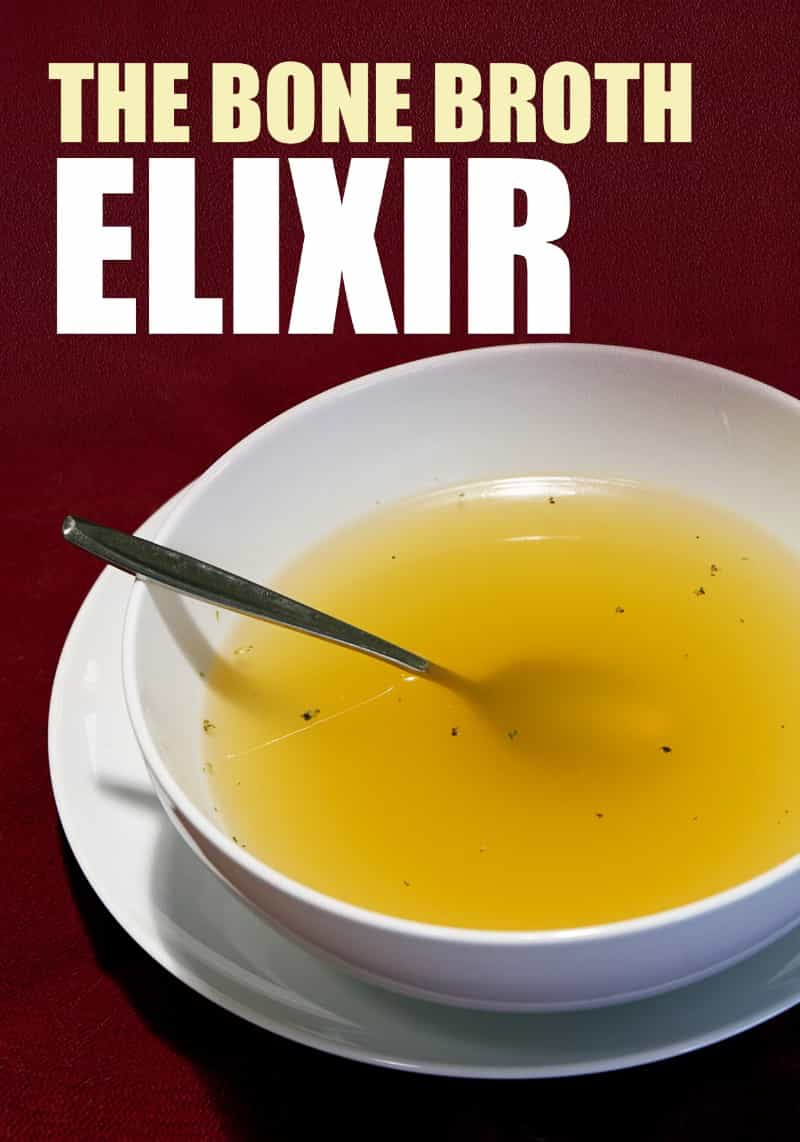Bone broth makes a nutritious ‘meal’ for the body and is easily prepared by simply boiling the connective tissues and bones of certain animals in water and adding in herbs, spices and sometimes vegetables. People usually use this bone broth as a base for making stews and soups.
Bone broth making goes way back in time
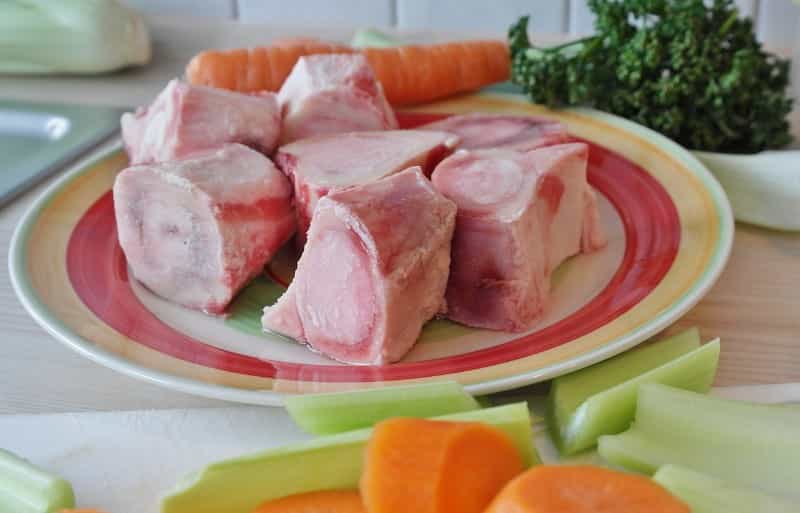
Making bone broth, although gaining in popularity today, dates back centuries ago. And although on the surface, it seems just a simple, not even particularly alluring to look at, underneath that simple, basic surface lies certain healing powers …
Centuries ago, our ancestors started making bone broth just simply out of necessity. Back in those days, throwing out any parts of an animal was an idea unheard of. To begin with, a successful hunt was a very rare occasion which meant that every part of the animal – and not just the muscle meat, was considered highly precious. It would be the hooves that were kept as well as the bones, the guts, the skin, everything – the hunters would make use of every single animal part, eating everything they could. The things they could not eat, such as the hides, they would make shelters from or shoes or clothing, or weapons.
Some of the animal parts which were too tough to chew on like some bones or knuckles or hooves and which also could not be used for shelter were put into the fire to break down. It was then that it was discovered how nutrients were drawn out from the fire breaking down the hard bones. Hot rocks were also probably used to beat and knead down the bones to deliver the bone marrow and nutrients. Other available foods like vegetables and tubers would be added to make up the primitive broth into a full meal. Slowly but surely over time, we have arrived at our modern broth of today, a combination of bones, vegetables, water, and spices.
Hippocrates, the father of medicine, was familiar with bone broth in his ancient Greece, recommending it to his patients for those who suffered from digestive problems. From ancient Greece, the wonders of bone broth would cross many international borders to become one of the staples of Asian cuisine. Today, traditional Chinese meals feature light soups which are made from vegetable and bone broth to help cleanse the palate and to aid in indigestion. The Koreans make their ‘seolleongtang’ dish, comprising brisket and ox bones and the Japanese make their ‘tonkotsu’, a soup made with noodles and pork bones.
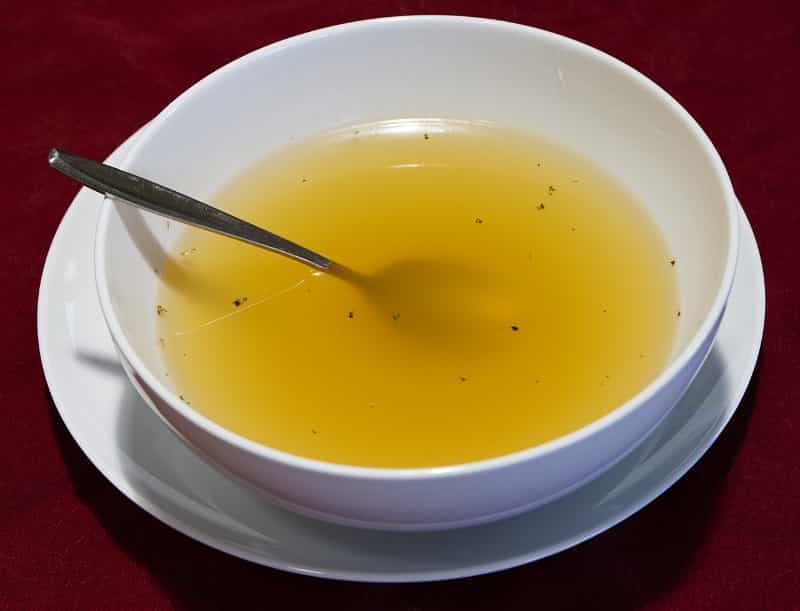
Bone broth became very popular in the Middle East and one physician and philosopher, Maimonides, recommended that people eat chicken bone broth, both as an excellent food and as an excellent medication. This advice was passed down from ancient generations because the bone broth was always touted as folk medicine to treat colds and flu. It was also known as ‘Jewish penicillin’ because it acted like such an excellent alternative to penicillin. There must surely have been medical wonders seen from consuming bone broth because its popularity spread over to South American, and even to the Caribbean. There the people called it their ‘cow foot soup’, still eating it today, mainly at breakfast time, in order to cure many an ailment.
Bone broth went on to be considered a staple in fine dining and cooking, and restaurant chefs were known to include it in all their stews, soups and gravies. During the industrial revolution, home-made bone broth became exceptionally popular. As the fuel costs became higher, the people would leave their broths bubbling over pots on the fires at home because they could no longer afford the gas to heat stoves.
But good times don’t always last and unfortunately, a Japanese biochemist decided to make MSG or Monosodium glutamate to “copy” the real delicious meat flavors of the real bone broth. In 1908. He basked in the glory of more and more food places using his convenient products. In fact, food manufacturers were so impressed that their customers were enjoying MSG, customers who believed it tasted like the real thing when there was, in reality, no meat whatsoever included.
But if it saved a lot of money and labor, and it was reckoned – why boil bones for a long time when you can just throw in a cheap chemical with nobody even knowing the difference? Unfortunately, to move the clock forward rapidly, most of the so-called bone stock you buy in the stores today is definitely not made from animal bones at all!
Of course, there are many fanciful foods and fads around today, many of which turn into multi-million dollar empires; it’s because people are prepared to buy into health and happiness. Bone broth is now the one basking in the resurgence in popularity. It has now become a very trendy food to enjoy. People are starting to want to get back to their roots; they are looking to live more simple, mindful lives, eating organically grown foods that their grandparents enjoyed so much; they want to be less materialistic, healthier happier and at peace; stress-free.
Those who are health conscious want to make their own bone broth and they want to make it the old-fashioned, healthy, nutritious, real way. They are investing in slow cookers to make it themselves, searching for real bone suppliers, sourcing out the highly organic ingredients. There is an increasing demand from people today to know exactly what they are putting into their bodies; they want foods of quality to eat and to do that, they are prepared to get back to basics – like real bone broth.
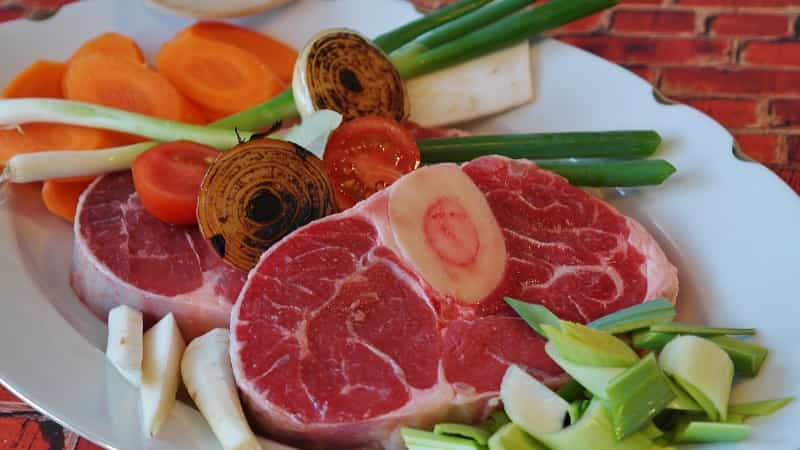
Making bone broth isn’t even something new; it is just the health benefits that have suddenly come to the fore and proving so popular with the Paleo-dieters. Some celebrities are endorsing it big-time too, such as Gwyneth Paltrow, Tom Collichio and Kobe Bryant.
There are some who say bone broth is just all hype, a ‘new’ indulgence that is becoming more and more expensive. And yet others swear by its healing powers because let’s face it; the real bone broth of old certainly was nutrient-packed, full of vitamins and minerals. Let’s look why bone broth has suddenly received such a surge, why so many are now returning to this drink, whether it is drunk as a snack or used as a meal replacement. There are known health benefits that people want to tap into:
Reduces joint pain and promotes healthy, strong bones
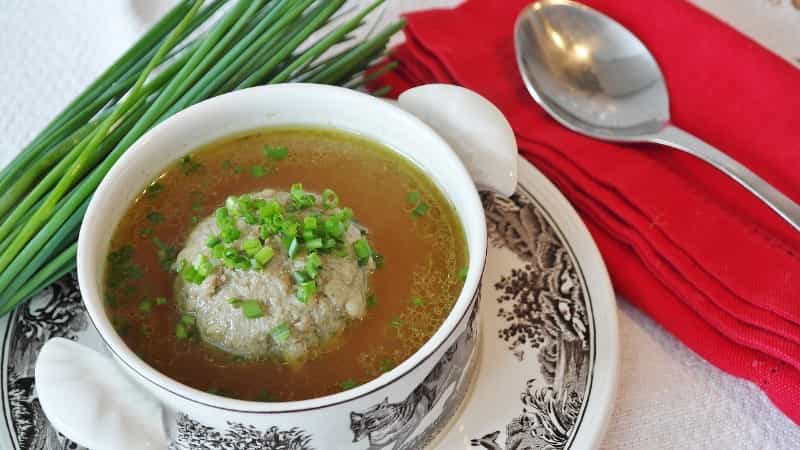
The older we get, the more collagen deteriorates in our joints. Doctors would suggest people take Glucosamine supplements to help their bones, particularly if people had arthritis, but now people are looking rather at bone broth. As the broth simmers on the stove, it pulls out the gelatin in the bones; setting often in the fridge like jelly. As you drink the broth, your body will absorb the gelatin which makes your bones strong and promotes joint health – special cushioning for your joints with no friction involved.
Promotes healthy gut
We’ve all heard of Leaky Gut Syndrome, where there is a breakdown of intestinal and stomach lining. The result is that food is not properly digested, and this goes on to cause bacteria and toxins to leak into the bloodstream. People think this is what causes food intolerances and allergies. Fortunately, bone broth is packed with building blocks for the body called amino acids which help in preventing inflammation of the digestive tract, promoting healthy probiotic growth. The collagen in bone broth nourishes the intestinal lining. If you suffer from increased permeability associated with a leaky gut, bone broth with vegetables and spices for the prebiotics, flavonoids, and anti-inflammatories is a must-have in your future culinary fare.
Improvement in immune system
Apart from helping with a leaking gut, when you drink bone broth, you can expect to notice an improvement in your immune system too. People who drink bone broth also claim that when they drink the broth, they appear to have less flu and cold symptoms, but this could partly be as a result of the bone broth making the gut so much healthier!
All of us have a certain amount of cancer cells that swirl around at any given time in our bloodstream and it is the job of the immune system to hunt down the pathogenic cells and to destroy them before they get out of control. There are particular substances in bone broth that are essential in this whole process. Bone marrow that becomes liquefied over time as your soup is simmering is really beneficial to the immune system in contributing to the production of white blood cells.
Improved mood and energy levels

Things fall into place naturally because the bone broth contributes towards keeping the body in much better condition, and that means fewer ailments. The alleviation of anxiety could come about because of the glycine action which slows down the production of norepinephrine, which is responsible for inducing feelings of anxiety. Some instances of anxiety are reduced when bone broth is consumed.
Shiny hair, healthy skin

It is the collagen to be found in bone broth that helps to promote shiny hair and healthy skin. When there is insufficient collagen in the body, the connective tissue starts deteriorating and you might notice cellulite-type skin. People who have consumed bone broth report back that they also lost weight and it’s because the level of cellulite started being reduced. When you increase your collagen intake, anti-aging benefits might be noticed such as softening of wrinkles and less puffiness around the eyes. We all know how collagen is such an important nutrient when it comes to the elasticity of the skin. It certainly appears to be the elixir for glowing skin.
Although there is no scientific evidence yet of true evidence, bone broth is still reportedly been touted by those who drink it, to benefit people with autism and attention deficit hyperactivity disorder, (ADHD), depression, dyslexia and schizophrenia.
People ask if there is a difference between bone broth and stock
There was once a time when bone broth and stock was considered the same thing, but today ‘stock’ means stock cubes that you buy in the supermarket. They have been manufactured to produce a meaty flavor, but are not made from bones. Even the traditional stock that has been made from classic cooking and cooked for around 3 hours isn’t the same as the real traditional bone broth that takes around 6-24 hours of simmering. In much the same way that green juice is the fantastic concentrate produced by green veggies, so bone broth is packed with the goodness that animal foods will offer. Overflowing with potent health benefits, it is ideal to be drunk in the colder months when you don’t really feel like cold juices and smoothies. It’s actually exciting to see how this super-food is reaching such popular status again, coming from such ancient times as well.
Since our ancestors invented fire and cooking utensils, this enabled them to extract all the nutrients which were once inaccessible in the bones. The resurgence of bone broth comes at an excellent time when we are beginning to understand much more about the gut and how, as the center of the immune system, it needs to be in peak condition. It is these bones that have the proteins, the collagen and minerals in them that provide such glowing results to skin and health and why people are so willing to pay millions to achieve. In saying that, however, it is essential that the bones you use for your bone broth are sourced from a good organic type butcher, free from any synthetic hormones and pesticides, let alone all the modified feeds that the poor animals have been fed – stay away from meat and bones like this, as they will be of no benefit to your health.
Choose your broth
It is very easy to make homemade, nutrient-dense bone broth. You really cannot compare your own homemade broth with versions that come from your store. Store- bought versions will more than likely contain MSG and other chemicals and often will lack gelatin and the other health-boosting properties that real organic home-made bone broth contains.
Make your own broth

As mentioned above, when you select bones for your broth, ensure that you go for high-quality bones from cattle or bison that have been grass fed, or from poultry raised in a pasture or even from wild, caught fish. Because important minerals will be extracted and drunk, you need to make sure that the animal bones you are using came from a very healthy animal.
Ingredients needed to make your own broth
- 2 or more pounds of bones from a healthy source
- Chicken feet (2) for added gelatin, although this is optional
- 2 carrots
- 1 onion
- 2 stalks of celery
- Apple Cider Vinegar, around 2 tablespoons
Optional:

1 bunch of parsley, 1 tablespoon or more of sea salt, herbs and spices, 1 teaspoon peppercorns, 2 cloves garlic added in the last 30 minutes or so.
Direction
- Take a large stock pot to cook your broth in. You will also need a strainer to remove the pieces when the whole procedure is over.
- If you are preparing your broth using raw bones, particularly beef, the flavor will be improved if you roast the beef bones first in the oven. You can place them in a roasting pan to roast for around 30 minutes at 350.
- After that, place the bones in the large stock pot (maybe around 5 gallons or so). Then pour filtered water over the bones, adding the vinegar as well. Leave for about 20-30 minutes in the water. The vinegar contributes to making the nutrients in the pot broth more available.
- Chop up the vegetables and add them (except the parsley and garlic) to the pot, adding the salt, pepper, spices, and herbs.
- Bring the broth to boil and once it has reached vigorous boiling, reduce the heat and simmer continually until done. In the first few hours of simmering your broth, it will be necessary for you to remove any impurities that will float to the surface. You will notice a frothy or foamy layer forming and this can be easily scooped away using a big spoon. You might need to check every 20 minutes or so for the first 2 hours to remove the frothy foamy parts. If the animals were healthy, grass-fed animals, you will notice far less frothy foam than for other animals. In the final 30 minutes, you could add the garlic and parsley if you want this in your broth.
- Then you will remove the broth from the heat and allow it to cool before straining with a metal strainer so all the bits of bone and vegetables are removed. When the broth is cool enough, store it in a glass jar in the fridge for about 5 days, or you can freeze it too.
You can’t afford not to make bone broth a part of your regular health routine.
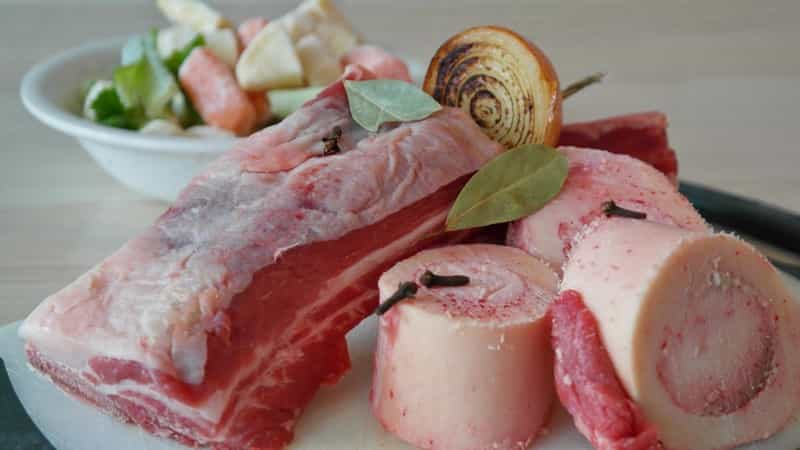
When all is said and done, it is important to bear in mind that there is no study that yet proves that bone broth lives up to all the claims made by people. There are heaps of people who support the benefits derived from all the ingredients though. There is science which supports the use of gelatin and other ingredients that are found in bone broth as being capable of preventing and even reversing osteoporosis, osteoarthritis, autoimmune disorders, digestive distress and also cancer.
Many just wonder if bone broth is not just another health gimmick, over sensationalized – or is it really the ancient nutritional meal that has endured through the corridors of time. The co-author of ‘Nourishing Broth’, Sally Fallon Morell says that bone broth might well be going through a bit of resurgence now, but there is nothing new about it – it is just one of those rare health movements in which science is validating tradition.
The fact of the matter still remains that broths are excellent for the human body, aiding in digestion and helping to move food easily along the digestive tract. In most cultures, the broth is used for its health benefits and many still firmly believe that it is these ancient diets that are the solution to our modern health problems we are experiencing today. Whilst it is probably true that bone broth won’t cure ADHD, nor will it just erase the wrinkles from your face, that it certainly is healthy and tasty. There are plenty of people who will just call it another fad, but it certainly is hard to call something a fad when it has stood the test of time for thousands and thousands of years – and why? Because it’s for real, that’s why.

